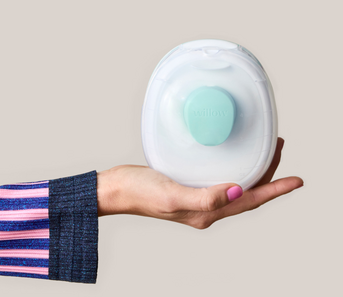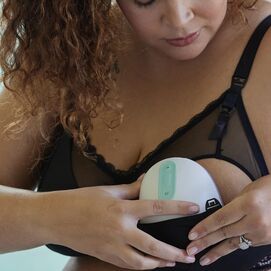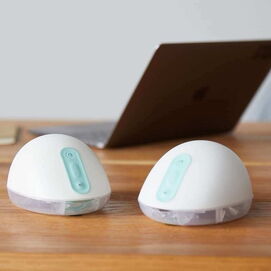Breastfeeding can be a challenge. This is especially true if your baby is struggling with latching problems. Unfortunately, difficulty latching makes it hard for your baby to remove enough milk to fill their tiny tummy. It can also affect your milk supply as your breasts may signal that you’re making enough when you’re not.
Latching issues are common, mama. And luckily, many of these issues can be fixed with the proper care. If you’re struggling with latching problems and want to know what to do next, keep reading. Below, you’ll find some of the most common latch issues and what you can do to fix them.
1. Prematurity
If your baby was born prematurely, they may struggle with breastfeeding. According to Raising Children, babies born at 34 weeks or older should be able to breastfeed normally. However, babies under this age are still developing and will require feeding help.
For example, some babies can take breast milk through a tube or via a bottle or cup. It all depends on your baby’s unique needs. We recommend speaking to your doctor to determine the best next steps.
Rest assured that as your baby grows you'll have the opportunity to continue breastfeeding if you choose to do so. Just make sure you have some support from a lactation consultant, your baby’s pediatrician or your OB/GYN.
2. Infections
Infections can also limit your baby’s ability to breastfeed or latch. For example, an underlying illness such as a cold could make a baby fussy or sleepy. This can make establishing a deep latch difficult.
Mama infections such as mastitis can also make achieving latch difficult as your breast may swell. This swelling may make it hard for your baby to grasp the breast fully.
If you suspect that you have mastitis or that your body has an infection, it’s best to reach out to your doctor for treatment. As you and your baby heal, achieving latch should become easier.
3. Heart Disease
Many babies are born with a condition known as congenital heart disease or CHD. This may inhibit their ability to breastfeed. According to the CDC, these babies may not be able to latch or feed at the breast due to complications such as hypoxia (low levels of oxygen in the blood).
If your baby has CHD, you still have the ability to breastfeed. According to the Children’s Hospital of Philadelphia, if your baby has a mild form of CHD and will await surgery for several months, you may still be able to nurse. Otherwise, you can provide breast milk by pumping and feeding your baby via a supplemental nursing system or tube.
Again, it’s best to speak to your baby’s pediatrician about the best next steps. And remember to remain flexible as breastfeeding may look a bit different until your baby receives CHD surgery or begins to heal.
4. Medications
Certain medications may affect your baby’s ability to latch, especially after labor and delivery. For example, some studies have shown that some medications received during labor such as epidurals may enter your placenta and affect your baby.
While this has been proven safe, it could take some time for the medication to wear off. This means your baby may be a bit sleepy or drowsy which can impact latch.
The best thing to do is just keep trying. Stay consistent. Your baby was born with breastfeeding know-how and will soon figure out what to do.
As you journey through breastfeeding, it’s best to avoid certain medications that may affect your baby for the best results. According to the Mayo Clinic, this list of medications is deemed safe for breastfeeding mamas. When in doubt, however, be sure to reach out to your doctor.
5. Cleft Palate
A cleft palate is simply a split or hole in the roof of your baby’s mouth. Due to the nature of a cleft palate, achieving a strong latch can be difficult. However, it can be done. According to the Cleft Lip & Palate Association, breastfeeding can be achieved when the cleft is very small or narrow.
The CLAPA recommends holding your breast close to the area where your baby does have a palate so they can achieve a good grip. They also recommend reaching out to a lactation specialist for assistance.
If your baby struggles to latch and feed from your breast, you do have other options. For example, you can use a specially made cleft palate bottle and feed your baby using expressed breast milk.
6. Breast or Nipple Complications
Your breasts or nipples can result in latch complications too. For example, if you have large nipples, it can be hard for your baby to latch since they must take the entire nipple and some of the areola into their tiny mouths. For large nipples, you can try a nipple shield which is often smaller and easier to latch onto.
If you have large breasts, it can be hard to hold your breast and your baby for support during breastfeeding. In the early stages of breastfeeding, it must be best to have someone help you until you become accustomed to the process. Or, try a different position such as the c-hold.
If your nipples are flat, it’s best to try pumping or stimulation for a few minutes before breastfeeding to help your nipples protrude. Or, you can also try a nipple shield.
Willow 360™ Wearable Breast Pump
Willow 360™ Wearable Breast Pump
Willow 360 is designed with a zero-gravity latch to give you 360° of leak-proof mobility. It's the hands-free breast pump that changed the game.
7. Baby Behavior
Sometimes, a baby’s inability to latch deeply is simply because of your baby’s behavior. For example, your baby may push away when trying to latch. Or, they may be a sleepy feeder who falls asleep within minutes of latch.
These issues are caused by various reasons. For example, your baby may be frustrated by slow milk flow. If that’s the case, try massaging your breasts while you breastfeed to stimulate milk flow.
Or, your new and sleepy baby may be exhausted from the birthing process. Keep them stimulated during breastfeeding by talking to them, rubbing their cheeks or even using a cool washcloth on their cheeks.
Stay consistent and try to offer your breast every 2-3 hours. Sometimes, babies just need a bit more time to get it right.
How Can I Get My Baby to Latch Deeper?
For the best latch, your baby will need to open their mouth wide to encompass your nipple and some of the areola. To make it happen, follow these steps:
-
First, make sure you’re in a comfortable breastfeeding position such as the football hold or the cradle hold.
-
Align your baby’s nose to your nipple. As your baby opens their mouth, guide them to your breast for latch. You may need to place your finger on their chin and gently pull downward to inspire a wider latch.
-
Make sure your baby’s lips are turned outward. And if you feel any pain, pinching or discomfort, break the latch and try again.
Want to learn more about getting your baby to latch deeper? Check out this guide.
Remember mom, your baby is learning how to breastfeed just like you. Be patient and always reach out for support when you need it.
Breastfeeding Is a Journey—You’re Not Alone!
Breastfeeding is full of ups and downs. There’s good news though—you’re not alone! To learn more about breastfeeding, check out our blog. Or, if you’re looking for a wearable and portable breast pump, check out Willow.
Get pumping support with Simplifed
Get pumping support with Simplifed
Get access to free virtual feeding support from the lactation consultants at Simplifed. They can help you navigate supply issues, introduce a bottle, and more, and are trained on Willow pumps.















